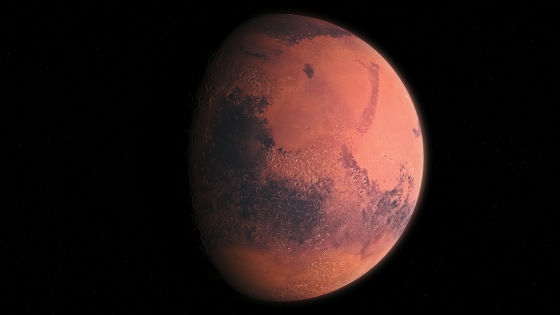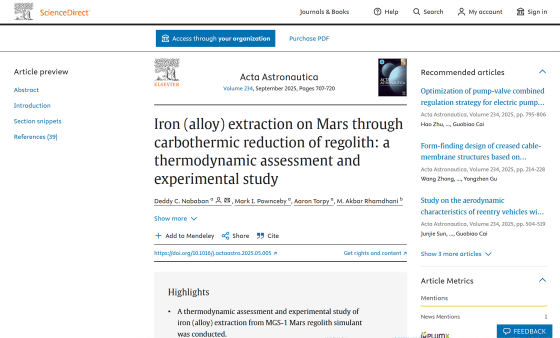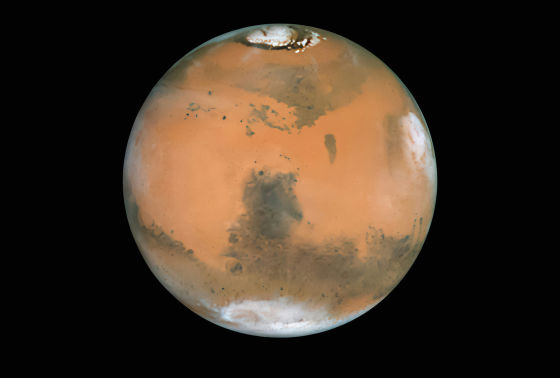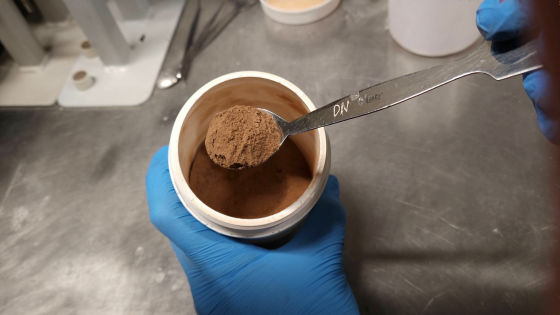Scientists are exploring ways to create metals from Martian soil, potentially providing local building materials for a Mars base

As NASA and others plan manned exploration of Mars in the future, the idea of 'building a base or habitat on Mars' is becoming a reality. One of the major obstacles in building a Mars base is 'how to transport large amounts of building materials to Mars?' Scientists are exploring 'how to make metals from Martian soil' to solve this problem.
Iron (alloy) extraction on Mars through carthermic reduction of regolith: a thermodynamic assessment and experimental study - ScienceDirect

Metals extraction on Mars through carthermic reduction: Mars regolith simulant (MGS-1) characterization and preliminary reduction experiments - ScienceDirect
https://www.sciencedirect.com/science/article/abs/pii/S0094576525002498
How to make metals from Martian dirt | Swinburne
https://www.swinburne.edu.au/news/2025/08/how-to-make-metals-from-martian-dirt.html/
Building a Mars base requires a huge amount of building materials, but launching materials from Earth into space is extremely expensive. For example, NASA's Mars rover ' Perseverance ' weighed about one ton, and it cost a staggering $243 million (about 36 billion yen) just to send it to Mars.
Although launch costs have been falling in recent years thanks to advances in the space industry, transporting all the necessary building materials from Earth to build a Mars base would still be extremely expensive. Dr. Dedi Nababan, a graduate of Swinburne University of Technology in Australia and a postdoctoral researcher at the Commonwealth Scientific and Industrial Research Organization (CSIRO) , has been pondering this question for many years.
'It may be possible to send metals from Earth to Mars, but it's not economical. Can you imagine transporting tons of metals to Mars? It's not realistic. Instead, we can utilize resources that are on Mars. This is called in-situ resources utilization (ISRU) ,' Nababan said, advocating for producing building materials on Mars.

The science of creating metals from materials found in space is called 'astrometallurgy.' For example, Mars has all the ingredients needed to create metals, since its regolith contains iron-rich oxides and its atmosphere contains carbon, which acts as a reducing agent.
Nababan, along with Professor Akbar Ramdani, a space metallurgist at Swinburne University of Technology, is studying the metal-making process using simulated regolith, an artificial replica of Mars' regolith. In tests, the simulated regolith was placed in a chamber that replicated the Martian surface pressure and heated. They showed that pure iron was produced at about 1,000 degrees Celsius, and a liquid silicon-iron alloy was produced at about 1,400 degrees Celsius.
'We chose a simulant material with properties very similar to those found in
Below is the simulated Martian regolith that Nababan and his colleagues are using in their research.

ISRU is a growing field in space science, and the oxygen generation device 'MOXIE' onboard Perseverance has already successfully experimented with producing oxygen from carbon dioxide contained in the Martian atmosphere. Creating metals from Martian soil could be a new breakthrough for ISRU.
NASA's oxygen generator 'MOXIE' completes its two-year mission on Mars, successfully generating approximately 122g of oxygen in 16 experiments - GIGAZINE

Ramdani hopes that alloys made on Mars could be used in the exterior walls of homes and research facilities, as well as in drilling machinery. 'There are certainly challenges: we need to better understand how these alloys will perform over time, and of course, whether this process can be replicated on the actual surface of Mars,' Ramdani said.
Related Posts:
in Science, Posted by log1h_ik







